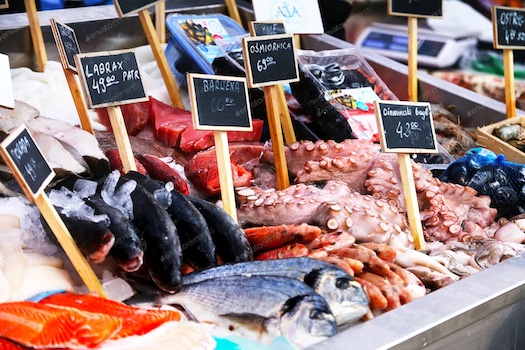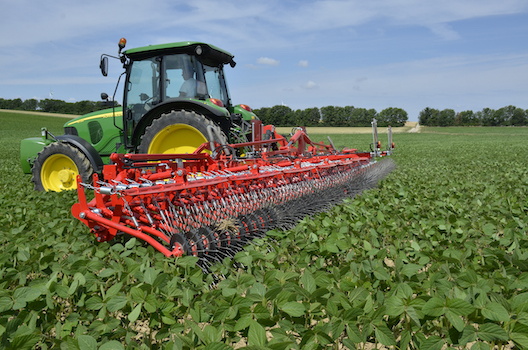Fishy business: tracing the origins of seafood sold in Canada

Canadian grocers offer a wide range of seafood products, which many shoppers might assume were harvested off part of the country’s extensive coastline. Unlike other food that might be found in a store, however, the labelling regulations governing the sale of these products are more limited, making it difficult to determine exactly where they originated.
This lack of clarity, along with implications for the safety and sustainability of seafood, became a focus of the House of Commons Standing Committee on Fisheries and Oceans. Last year the committee, which heard from a wide range of individuals with various interests in this topic, published a report with 13 recommendations for improving the way seafood is labelled and marketed in Canada.
“A common theme heard during the committee’s study was the lack of clear lines of responsibility and accountability in Canada’s fish and seafood traceability and labelling policies,” the report stated. “Witnesses identified gaps in Canada’s traceability and labelling requirements leading to confusion and possible fraud at the consumer level as there is no agency responsible for leading on the issues of ensuring the accuracy of fish and seafood product labelling.”
Despite assurances from the Canadian Food Inspection Agency (CFIA) that this particular supply chain is closely monitored to protect the health of consumers, retail seafood must be labelled only with reference to the “last place of transformation”, meaning the country where it was processed before sale, rather than where it was originally obtained. According to Sayara Thurston, representing the charity Oceana Canada, this absence prevents Canadians from determining if these products abide by environmentally and economically sustainable harvesting or aquaculture practices.
“This makes it really hard for consumers to get an accurate sense of what they're buying, if they're trying to avoid certain countries or certain practices because they have concerns about those things, or if they're trying to buy locally,” she told the committee. “Right now, they don't have the accurate information to make those choices.”
Such choices can be crucial to Canada’s seafood producers, as explained by Claire Canet, a project officer with Regroupement des pêcheurs professionnels du sud de la Gaspésie, which represents that region’s lobster industry. She described how labelling made a major contribution to that industry at the beginning of the Covid pandemic in 2020.
“Because our lobster was identifiable, we were able to get the support of the distributors, such as Metro, who were able to put forward in their retail shops identifiable Quebec products,” she recounted for the committee. “That allowed our buyers to maintain the price that they were selling to Metro and some more minor chains. Ultimately, the Gaspé lobster fishermen were able to maintain their selling price to the main buyer.”
Treat fish as food
A key recommendation in the committee’s report was a formal review of the CFIA “fish list”, which documents the names used to describe different types of seafood for commercial purposes. At present, the committee heard, this list is too limited, and widely varying species from around the world are being placed together in broad categories where they do not belong.
In the government’s response to the report, issued late last year, it acknowledged that jurisdictions such as the European Union maintained extensive lists that include scientific as well as common names for seafood species. However, the government insisted there was no Canadian consensus on how comprehensive to make the CFIA list, while some businesses are independently labelling their products with details such as species name and harvesting country.
“The CFIA will continue with its targeted surveillance of fish and seafood to address high-risk areas of misrepresentation,” the response concluded. “The CFIA is also working actively to improve its DNA testing capabilities to verify for species substitution in imported and domestic products. In addition, the CFIA plans to explore expansion of its DNA database to include new sub-species of fresh and frozen tuna, for example, to detect the substitution of a lower value fish such as Bluefin for Yellowfin tuna.”
That is a step in the right direction, said Emily de Sousa, who has created a detailed on-line reference that explores all aspects of seafood for Canadians. She spoke with Research Money about the committee’s report, which reflects most of what she already knew about seafood traceability.
“The majority of problems in seafood can be traced back to the fact that we do not treat fish as food,” she argued. “Canada does have a lot of pride in our food production. We’re very protective of our farmers. We do not manage fisheries the same way that we manage agriculture.”
She suggested government programs and financial resources, designed to help farmers market their goods in Canada and abroad, often have no counterpart to help seafood producers in the same way. Instead, the onus has fallen on grocery chains, such as Metro or Walmart, which have taken their own measures to label these products with the help of the multinational non-profit agency, Marine Stewardship Council (MSC).
“A lot of those decisions are being driven by the consumer, in reality,” said de Sousa. “A lot of retailers use MSC, for example, or things like Seafood Watch or Ocean Wise to dictate what seafood they buy, because they want to be able to market that to consumers.”
She traces her own passion for seafood to her family’s roots in the isolated Portuguese Azores islands, where food security depends on knowing what is being harvested from the ocean. A similar cultural significance might be attached to seafood in some parts of Canada, but generally she has found a lack of appreciation for one of this country’s most important resources.
“Canada has the largest coastline in the world, and I don’t think it has been appreciated nearly as much as it should be,” she said. “The quality of seafood in Canada is amazing. We’re just not eating it. There’s great seafood products coming from everywhere, but people don’t even realize the bounty that we have here, on both the East Coast and the West Coast.”
R$
| Organizations: | |
| People: | |
| Topics: |
Events For Leaders in
Science, Tech, Innovation, and Policy
Discuss and learn from those in the know at our virtual and in-person events.
See Upcoming Events
You have 0 free articles remaining.
Don't miss out - start your free trial today.
Start your FREE trial Already a member? Log in
By using this website, you agree to our use of cookies. We use cookies to provide you with a great experience and to help our website run effectively in accordance with our Privacy Policy and Terms of Service.





